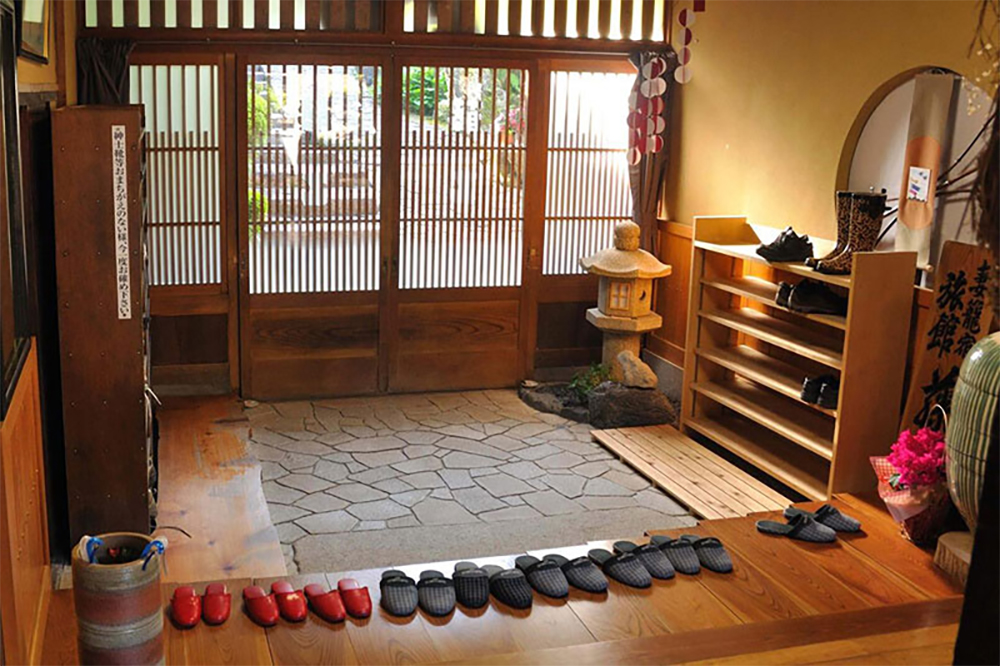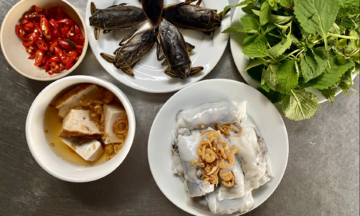Japan's social customs and expressions of respect can be a new world for visitors. Learning basic etiquette and manners can enhance the travel experience and foster positive interactions with locals. The following guidelines are provided by the Japan National Tourism Organization (JNTO) in Vietnam.
Minimal physical contact
Generally, Japanese people avoid physical contact in daily interactions. This includes refraining from hugging, minimizing handshakes, and other public displays of affection. While physical touch isn't entirely taboo, observe how those around you interact to gauge appropriate behavior based on the level of familiarity. Visitors should avoid overly familiar physical contact with Japanese people, which might be considered offensive.
Slurping noodles and eating sushi by hand
 |
Noodle slurping is a cultural norm in Japan. Photo: Kilala |
Noodle slurping is a cultural norm in Japan. Photo: Kilala
Japan offers a variety of noodles like ramen, udon, and soba. In most restaurants, slurping noodles is customary to fully appreciate the flavor. While common in Japan, this practice might be considered impolite in Vietnam.
Sushi in Japan is typically eaten with both chopsticks and hands. Only the fish is dipped in soy sauce, not the rice, and wasabi is not mixed directly into the soy sauce. These rules are strictly observed in upscale restaurants, but conveyor belt sushi establishments are more relaxed.
Vietnamese visitors shouldn't criticize local dining customs and needn't force themselves to adopt them. Leaving food on your plate is discouraged, as is taking leftovers home. When dining in a group, meals begin only after everyone has received their food.
Undressing in public baths
Bathing in onsen (hot springs) or sento (public baths) is a globally renowned aspect of Japanese culture. In these settings, remove all clothing before entering the bath and rinse your body with soap. Sit and use a bucket to pour hot water over yourself, ensuring the water is turned off when not in use, and avoid splashing others. Don't place towels or any items in the water; the bath is for bathing, not swimming. Carefully read the instructions before entering a public bath, refrain from staring, and avoid commenting on others' bodies.
Maintaining silence in public spaces
Quiet conversations are acceptable on trains, but phone calls at any volume are discouraged. Stand aside when the train arrives to allow other passengers to disembark first. Always offer priority seating to the elderly, pregnant women, or people with disabilities. If you have a phone, keep it on silent and minimize calls.
 |
Japanese people remove their shoes and wear slippers indoors. Photo: Naver |
Japanese people remove their shoes and wear slippers indoors. Photo: Naver
Removing shoes indoors
The custom of removing shoes stems from the tradition of sitting and sleeping on tatami mats, still practiced in ryokan (traditional inns). This etiquette involves removing shoes at the entrance and using provided slippers, placing your shoes in a designated box or neatly to the side. Once inside, it's customary to remove slippers when stepping onto tatami mats or entering bathrooms. Separate slippers are usually provided for restroom use. Besides cleanliness, removing shoes is a sign of respect for the host or establishment.
Tam Anh (according to JNTO)












